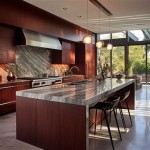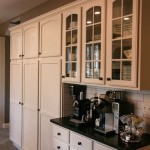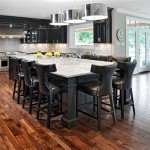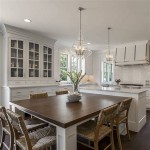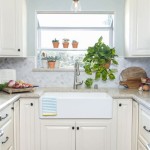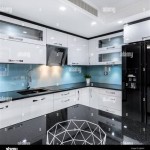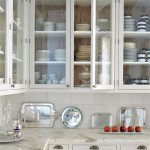Must-Haves in a New Kitchen: Functionality and Design
A kitchen is often considered the heart of a home. It is a space not only for preparing meals but also for gathering, entertaining, and creating memories. When designing or renovating a kitchen, careful consideration must be given to both the functionality and the aesthetic appeal. A well-designed kitchen seamlessly blends practicality with style, creating a space that is both efficient and enjoyable to use. This article will outline the essential components and features that are considered must-haves in a new kitchen, ensuring both long-term value and daily satisfaction.
Efficient Layout and Workflow
The layout of a kitchen significantly impacts its efficiency. A poorly planned layout can lead to wasted steps and frustration, while a well-designed layout optimizes workflow and makes meal preparation a more pleasant experience. One fundamental principle in kitchen design is the "work triangle," which connects the three main work areas: the sink, the refrigerator, and the cooktop or range. Ideally, these three zones should be arranged in a triangle with minimal obstruction, allowing for easy transitions between tasks.
Different kitchen layouts suit different spaces and needs. Common layout types include:
- U-shaped: This layout is characterized by three walls lined with cabinets and appliances. It provides ample counter space and storage, making it ideal for larger kitchens where multiple cooks may be working at the same time.
- L-shaped: This layout features two adjacent walls of cabinets and appliances. It is versatile and can be adapted to various kitchen sizes. An island can often be incorporated into an L-shaped kitchen to add extra workspace and storage.
- Galley: This layout consists of two parallel runs of cabinets and appliances, creating a central corridor. It is efficient for smaller spaces, but can feel cramped if not designed properly.
- Island: An island can be added to any of the preceding layouts to create additional prep space, storage, seating, or even a second sink. An island should be appropriately sized for the space and positioned to allow for comfortable movement around it.
Beyond the basic layout, consider the flow of traffic through the kitchen. Ensure that pathways are clear and wide enough for multiple people to move around comfortably, especially during meal preparation. Also, think about the placement of appliances and storage in relation to each other. For example, placing pots and pans near the cooktop simplifies cooking, while positioning dishware near the dishwasher makes unloading easier.
Adequate countertop space is another essential element of an efficient kitchen. Plan for sufficient space on either side of the cooktop and sink for food preparation. Consider installing different countertop heights to accommodate different tasks. A lower countertop is preferable for kneading dough, while a higher countertop is more comfortable for chopping vegetables.
Durable and Functional Materials
The materials used in a kitchen play a crucial role in its durability, functionality, and aesthetic appeal. From countertops to flooring to cabinetry, selecting the right materials is essential for creating a kitchen that can withstand the rigors of daily use and maintain its beauty over time.
Countertops: Countertops are a key focal point in any kitchen. They must be durable enough to resist scratches, stains, and heat. Popular countertop materials include:
- Quartz: A manufactured stone, quartz is highly durable, non-porous, and stain-resistant. It is available in a wide range of colors and patterns.
- Granite: A natural stone, granite is also durable and heat-resistant. Each slab of granite is unique, adding character to the kitchen. It requires sealing to prevent staining.
- Solid Surface: Offer a smooth, non-porous surface that is easy to clean. Scratches and stains can often be sanded out. Available in diverse colors and patterns.
- Laminate: An affordable option, laminate is available in a wide range of colors and patterns. It is less durable than other materials and can be damaged by heat and water.
- Butcher Block: A warm and inviting option, butcher block is ideal for chopping and food preparation. It requires regular oiling to prevent cracking and staining.
Flooring: Kitchen flooring must be durable, water-resistant, and easy to clean. Common flooring options include:
- Tile: A durable and water-resistant option, tile is available in a wide range of styles and colors. Porcelain tile is particularly durable and resistant to staining.
- Hardwood: Offers warmth and beauty to the kitchen. Solid hardwood can be refinished, but is susceptible to water damage. Engineered hardwood is more water-resistant.
- Luxury Vinyl: A durable and water-resistant option that mimics the look of wood or tile. It is comfortable underfoot and easy to maintain.
- Laminate: An affordable option that mimics the look of wood or tile. It is less durable than other materials and can be damaged by water.
Cabinetry: Cabinetry is a major investment in a kitchen renovation. Choose cabinets that are well-constructed and made from durable materials. Popular cabinet materials include:
- Solid Wood: A classic choice, solid wood cabinets are durable and can be refinished. Different wood species offer different looks and levels of durability.
- Plywood: A strong and stable material, plywood is a good choice for cabinet boxes. It is less prone to warping than solid wood.
- MDF (Medium-Density Fiberboard): A smooth and stable material, MDF is often used for cabinet doors and drawer fronts. It is less expensive than solid wood and plywood.
Beyond the materials themselves, consider the finishes and hardware. Choose finishes that are durable and easy to clean. Select hardware that is both functional and stylish, and that complements the overall design of the kitchen.
Integrated Appliances and Smart Technology
Modern kitchens benefit significantly from integrated appliances and smart technology. Integrated appliances enhance the streamlined aesthetic and create a more cohesive look, while smart technology adds convenience and energy efficiency to daily tasks.
Integrated Appliances: Integrated appliances, also known as built-in appliances, are designed to blend seamlessly with the surrounding cabinetry. Refrigerators, dishwashers, and ovens can all be integrated, creating a clean and uncluttered look. Integrated appliances often feature custom panels that match the cabinetry, further enhancing the seamless aesthetic.
Benefits of integrated appliances:
- Streamlined Appearance: Integrated appliances create a more cohesive and visually appealing kitchen.
- Space Saving: Integrated appliances can be more compact than freestanding appliances, freeing up valuable floor space.
- Customization: Integrated appliances can be customized to match the existing cabinetry, creating a truly bespoke kitchen.
Smart Technology: Smart technology can be integrated into various aspects of a kitchen, from lighting and appliances to faucets and security systems. Some examples of smart kitchen technology include:
- Smart Refrigerators: Smart refrigerators can track inventory, suggest recipes, and even order groceries automatically.
- Smart Ovens: Smart ovens can be controlled remotely and can adjust cooking temperatures and times automatically.
- Smart Faucets: Smart faucets can be controlled by voice or motion and can dispense water at a specific temperature or volume
- Smart Lighting: Smart lighting allows users to control the brightness and color of the lights remotely, creating different moods and atmospheres.
Benefits of Smart Technology:
- Convenience: Smart technology can automate many kitchen tasks, saving time and effort.
- Energy Efficiency: Smart appliances can be programmed to conserve energy, reducing utility bills.
- Security: Smart security systems can monitor the kitchen for intruders and alert the homeowner to any problems.
When selecting integrated appliances and smart technology, it is important to consider the specific needs and preferences of the homeowner. Not all smart technology is necessary or desirable for everyone. Choose appliances and technologies that will genuinely enhance the functionality and enjoyment of the kitchen.
Beyond the core elements, other considerations for a new kitchen should include ample storage solutions, appropriate lighting schemes, and a well-ventilated space. Storage can be maximized through clever cabinet design, pull-out shelves, and pantry organization systems. Lighting should be layered, combining ambient, task, and accent lighting to create a functional and inviting atmosphere. A powerful range hood is essential for removing cooking odors and grease from the air.
By carefully considering these essential components and features, homeowners can create a new kitchen that is both functional and beautiful. The result is a space that will provide years of enjoyment and enhance the overall value of the home.

5 Top Must Haves For Today S Kitchen

16 Must Haves For Your New Kitchen Craig Allen Designs

Top 13 Must Have Kitchen Cabinet Accessories For Your Remodel

10 Kitchen Cabinet Must Haves Showplace Cabinetry

6 Must Haves For Your New Kitchen Remodel

6 Must Haves For Your New Kitchen Remodel

16 Must Haves For Your New Kitchen Craig Allen Designs

Kitchen Remodel Must Haves Wood Palace Kitchens Inc

20 Kitchen Must Haves From Houzz Readers

5 Dream Kitchen Must Haves Iowa Girl Eats

